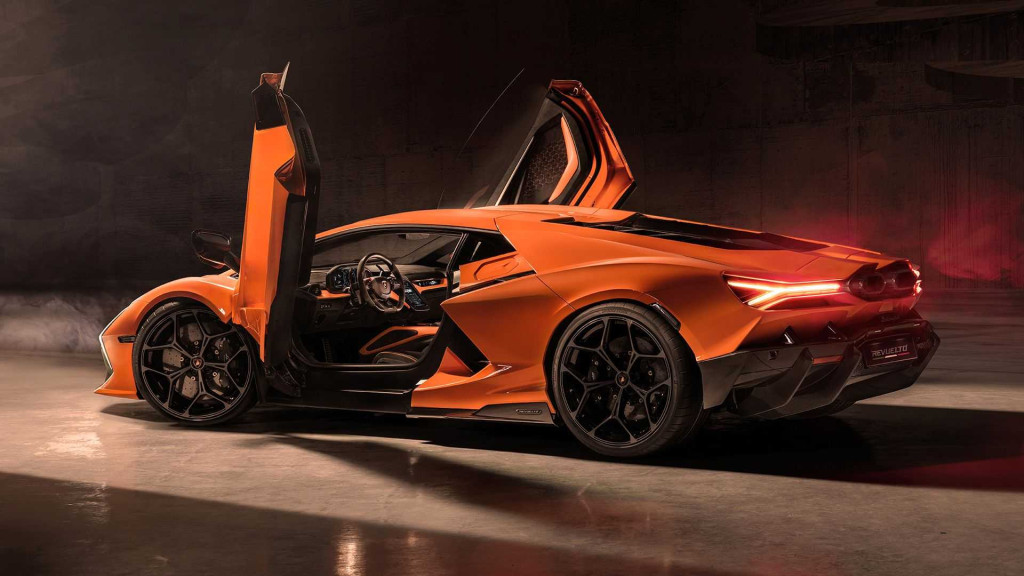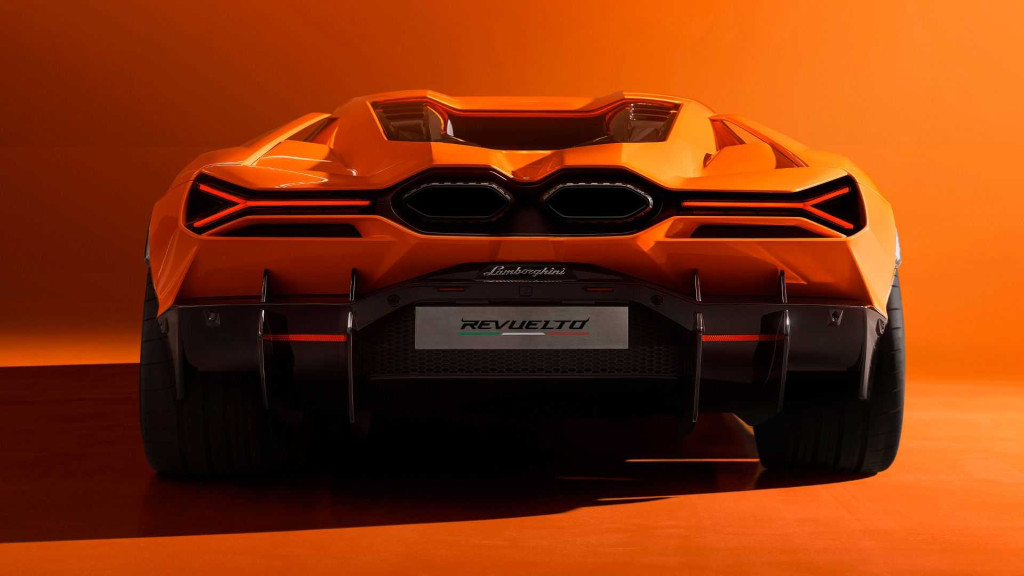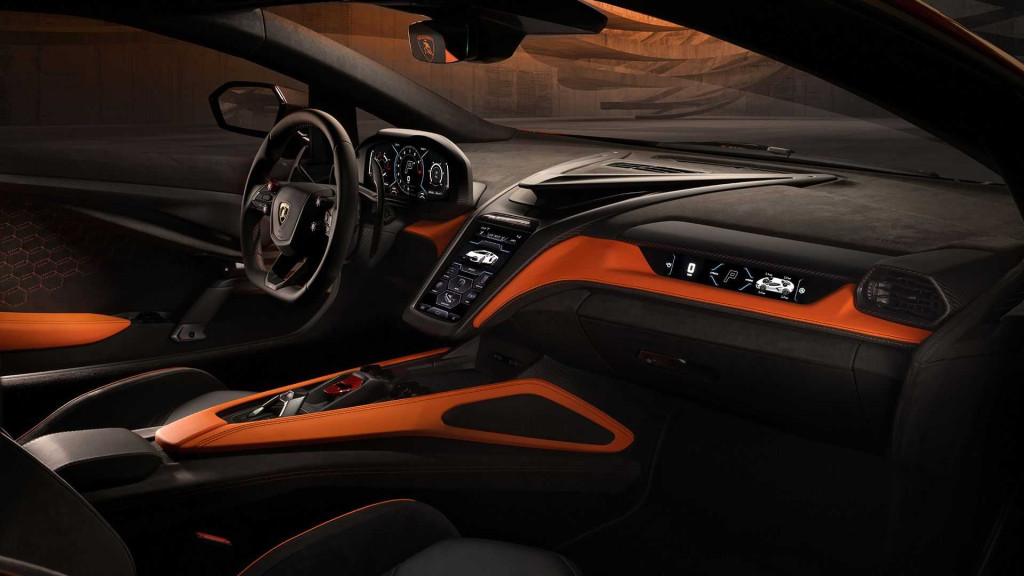Lamborghini on Wednesday revealed the Revuelto as its replacement for the Aventador.
The new name doesn’t follow Lamborghini’s practice of using names of Spanish fighting bulls, though it comes from the Spanish language, in this case meaning “scrambled” or “unruly.”
Unruly is probably the meaning Lamborghini wants you to imagine when thinking about the Revuelto. The striking supercar is the latest evolution of Lamborghini’s mid-engine V-12 legacy, which dates back to the Miura of the 1960s. However, there’s a twist this time around.
The Revuelto couples its V-12 with plug-in hybrid technology. The system comprises a newly developed V-12 (only the third in Lamborghini history) and a trio of electric motors, which results in a combined output of 1,000 hp, or enough for 0-62 mph acceleration in 2.5 seconds (0.3 seconds quicker than the Aventador) and a top speed of more than 218 mph.
Lamborghini Revuelto
Two electric motors power the front wheels independently, while the third electric motor is integrated with the transmission, in this case a new 8-speed dual-clutch automatic, and drives the rear wheels. This third motor can work independently or with the engine, depending on the driving mode, of which there are 13.
The driver can swap between the various modes using two dials on the steering wheel. One dial controls the powertrain and the other the chassis. One of the modes is electric all-wheel drive, made possible by a 3.8-kwh lithium-ion battery that sits in the middle of the car where a traditional all-wheel-drive system’s driveshaft is normally found. Lamborghini estimates the electric range of the Revuelto to be about six miles, making this mode suitable only for short city trips. The most potent mode is when the powertrain is set to its Performance setting and the chassis set to Corsa.

Lamborghini Revuelto
Here, the powertrain delivers its full 1,000 hp, with the 6.5-liter V-12 engine always active to ensure the battery has charge. The chassis systems are also set up to deliver their sharpest responses. For ultimate performance, the driver can also disable the electronic stability control in this mode so no power is cut to the wheels while driving at the limit.
A newly developed carbon-fiber tub sits under the body, and mounted to the front is a carbon-fiber frame that’s lighter than the Aventador’s aluminum front frame but also stiffer. The front frame also incorporates new carbon-fiber crash structures. The rear frame is made from aluminum, like on the Aventador. Despite these measures, the Revuelto still weighs approximately 490 pounds more than the Aventador in its final guise, with the newcomer’s dry weight coming in at 3,906 pounds. Weight distribution is 44-56 front to rear.

Lamborghini Revuelto
The car’s design is clearly an evolution of the Aventador, but multiple new elements are present and said by Lamborghini to have been inspired by modern fighter jets. The front end is also reminiscent of 2017’s Terzo Millennio concept car.
Aerodynamic elements have also been incorporated in the design, such as the side fins behind the front wheels which help direct air to the side intakes. The recessed roof also helps channel air to the rear wing which is an active element. The rear wing also has a manual control with three settings that lets the driver shift between various levels of downforce.

Lamborghini Revuelto
Inside, the Revuelto sports a floating 12.3-inch digital screen for the instrument cluster. A second screen with a portrait layout sits on the center stack and serves as the infotainment hub, and a third screen sits in front of the passenger. Information can be shared across the three screens via swiping, with Lamborghini emphasizing the passenger’s role as a co-pilot.
Revuelto deliveries are scheduled to start late this year, though Lamborghini hasn’t said when deliveries will start in the U.S.. Pricing also hasn’t been announced but is expected to start around 500,000 euros (approximately $542,000).
With the arrival of the Revuelto, Lamborghini’s transition to a fully electrified brand is about to accelerate. By the end of 2024, every Lamborghini will be electrified. A plug-in hybrid Urus arrives in the first half of 2024 and later that year Lamborghini will launch a plug-in hybrid successor to the Huracán. Both models are expected to feature twin-turbo V-8 engines.
